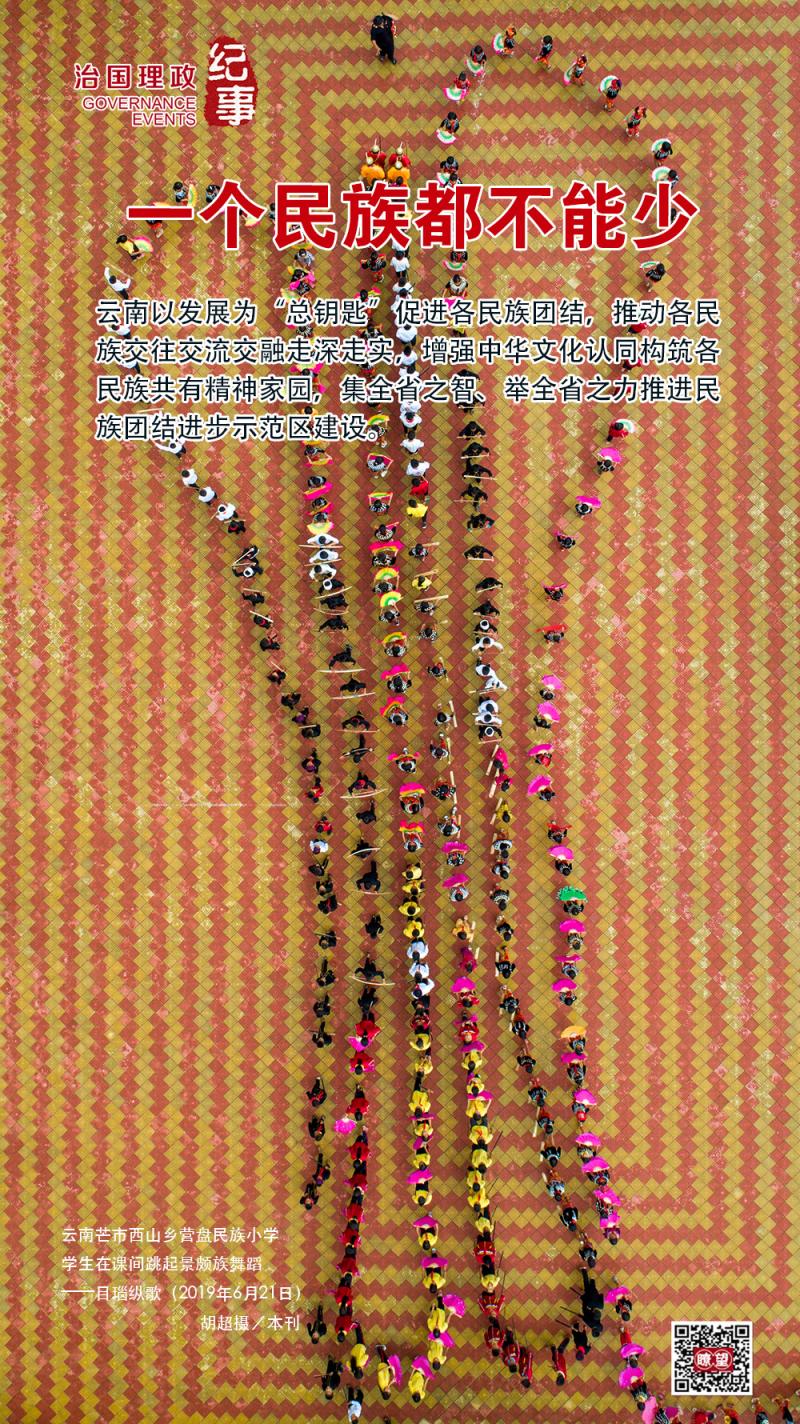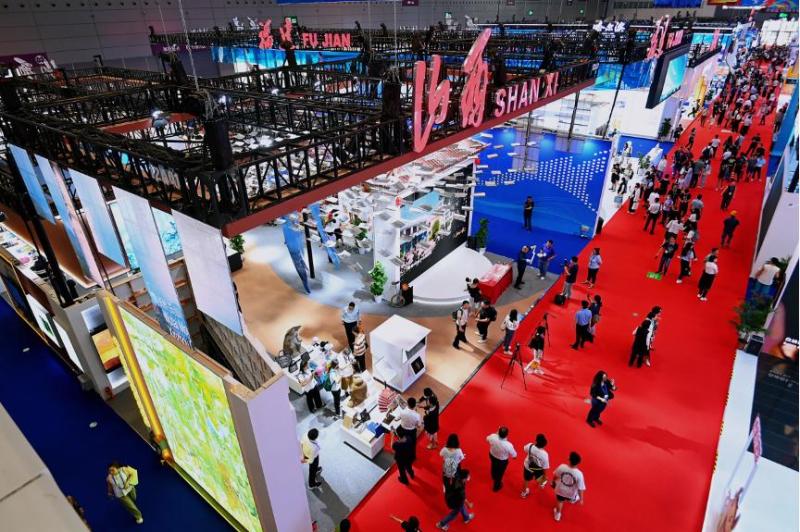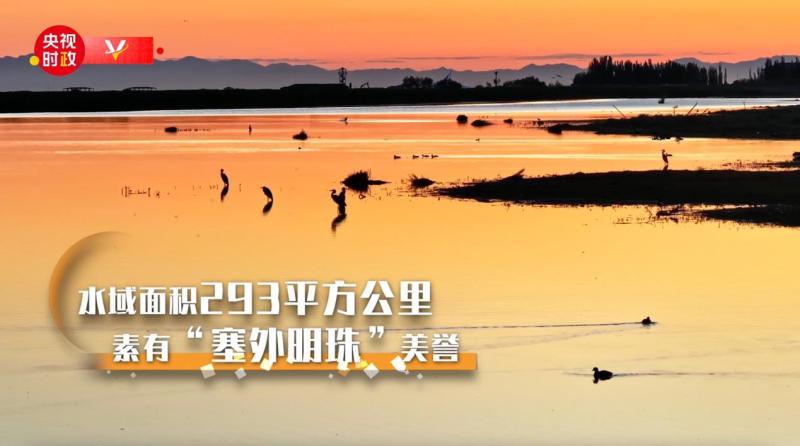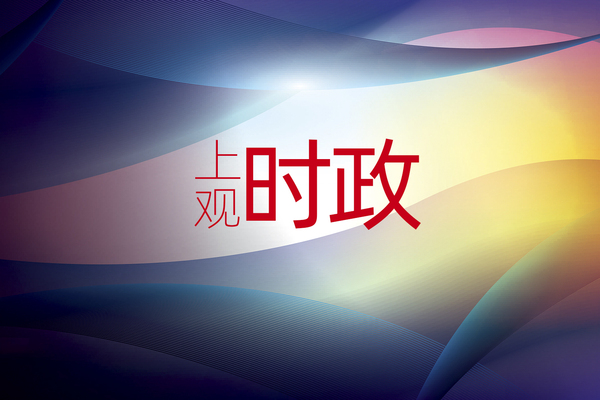What has changed? From "Eurasia" to "Asia-Europe"
On July 2, local time, President Xi Jinping arrived in Astana to attend the 24th meeting of the Council of Heads of State of the Shanghai Cooperation Organization and pay a state visit to Kazakhstan.
This is the 12th consecutive time that President Xi Jinping has attended the Council of Heads of State of the Shanghai Cooperation Organization.
||Tan Zhu arrived in Astana, and the "Triumphal Arch" symbolizing the history of Kazakhstan was surrounded by welcoming flags
The head of state is never absent, which also shows that China attaches great importance to the SCO. China has many descriptions of this organization:
How to understand these statements? We can start with a word that President Xi Jinping has frequently mentioned in recent years:
In 2022, President Xi Jinping mentioned the concept of "Eurasian Continent" in his speech at the Council of Heads of State of the Shanghai Cooperation Organization and used it five times.
From "Eurasia" to "Asia-Europe", this is not only a reflection of Asian subjectivity, but also a shift in the development narrative.
What impact will this change bring? Tan Zhu found some people in Kazakhstan, the venue of the SCO summit, and talked with them.
Expansion is a major focus of this SCO summit.
This year, Belarus is expected to join the SCO and become the 10th official member of the organization.
In addition, according to the SCO Secretary-General, the SCO has also received applications from countries in the Middle East, North Africa, South Asia, Southeast Asia and other regions actively seeking to join the "SCO family."
This also means that the scope of the SCO is gradually extending from the hinterland of the Eurasian continent to the southeast, northwest, southwest and other directions.
Li Tianyi from the China Institute of International Studies told Tan Zhu that the area of SCO member states is extending to important ports in Central Asia and the Indian Ocean, connecting the two major markets of Asia and Europe and covering the six economic corridors of the "Belt and Road".
With the rise of anti-globalization thoughts and many international organizations turning into “small circles”, why has the SCO been able to maintain such “vitality”?
Starting from the areas of concern of the SCO, we can find the source of the SCO's appeal.
At the beginning of its establishment, the SCO focused more on security issues. The aftermath of the end of the "Cold War" left some countries facing a severe security situation. Fighting terrorism, separatism and extremism was the most important thing to be vigilant at the time, and the SCO came into being.
As the times change, the world situation has changed. What the SCO has been doing is to adapt to the needs of the times.
In addition to the annual summit of heads of state, the SCO also holds meetings of heads of departments at multiple levels. Different departments will negotiate and finalize cooperation in various fields such as economy, trade, culture, science and technology, education, and health.
Among them, meetings of heads of economic and trade departments have surpassed security meetings to become the meetings with the most cumulative number of meetings.
Moreover, with the continuous advancement of trade and investment liberalization and facilitation, the topics discussed at the conference have gradually become richer, and the purpose has also shifted to paying real attention to the economic development of the region.
At the economic and trade conference held last year, all parties reached a consensus on strengthening cooperation in areas such as digital economy, green and low-carbon development.
While the issues discussed in some international organizations are politicized, the SCO discusses the most pressing issues facing member states in their current development.
In 2023, among the themes of the SCO coverage cluster in overseas English media, about half of the top 10 are related to the economy. By 2024, the most popular topics are basically related to "development", including medicine, digital economy, etc.
On the other hand, looking at overseas English media reports on the G7 in 2024, the top five were all related to geopolitics, including topics such as sanctions and military aid.
This trend is not an exception on overseas social media platforms. For example, on social media platform "X", in 2024, the trend of mentioning industrial and commercial topics in tweets about the SCO increased by 37%, and the trend of mentioning the automotive industry increased by 425%.
The SCO is thinking about how to seize opportunities, how to develop, and how to enable its people to live a better life.
The SCO member states are all developing countries. They desire and need development.
Such ideas are invaluable at a time when geopolitical conflicts are intense.
It is worth mentioning that the US media pays special attention to the SCO. In their reports, the US media also pays attention to China's narrative. For example, Chinese expressions such as "high-quality development" have become keywords in US media reports.
Foreign media also mentioned that the US policy has not brought changes to the Central Asian region, while the SCO cooperation projects are injecting new vitality into Central Asia, which will bring about geopolitical changes.
In fact, what has changed is not geopolitics, but the recognition of development concepts.
With the participation of countries such as Belarus, this transformation began to move from Asia to Europe and even further.
This transformation can be observed starting from one detail.
In the past few years, President Xi Jinping has frequently mentioned a word in his speeches:
These are the risks and challenges facing the SCO, which reflect the two different development models of "Eurasian" and "Asia-Europe".
At present, the United States and European countries have imposed tariffs on Chinese electric vehicles, making this challenge even more severe.
Not only did they hype up the false statement that China has "overcapacity", but they also interpreted discussions about tariffs in some countries as moves to impose additional tariffs on China. These countries tried to create an atmosphere that the additional tariffs on China have already had a spillover effect, so that the international community would gradually give up the idea of cooperating with China.
However, such a narrative has not affected the cooperation among SCO member states, which understand which development model is more in line with their own interests.
Many of the SCO countries are major energy producers. Changes in the energy sector have a great impact on the SCO. The most representative of these are the Central Asian countries.
The United States and European countries have extended olive branches to Central Asian countries for a long time, but have never provided them with guaranteed energy cooperation.
Politico, a European media outlet that focuses on EU trends, once pointed out that the European Commission drafted a 15-page confidential strategic document that showed interest in Central Asian energy, but was unable to advance energy cooperation because of dissatisfaction with some of the countries on some political issues. These dissatisfactions are likely to evolve into new geopolitical conflicts of interest in the future.
Some countries in the United States and Europe are creating conflicts while making demands on these countries.
Josep Borrell, High Representative of the European Union for Foreign Affairs and Security Policy, once proposed in a meeting entitled "Green Central Asia" that he hopes Central Asian countries will join the EU's green transformation and regard this as a prerequisite for the EU and Central Asia to resume energy cooperation.
But the problem is that the Central Asian countries do not want to make a green transition, but they do not have the ability to make a green transition.
This is the development model of "Eurasia" - the United States and Western countries do not consider the development stages of other countries and forcibly set goals for these countries. These goals have instead become obstacles to the development of these countries.
However, if these countries have really made achievements in some areas, the United States and Western countries will curb their development through suppression.
To put it bluntly, in the "Eurasia" model, "green development" has become a means for it to interfere in the development of other countries.
Green transformation and development has become a concrete action in the SCO:
||In 2023, China and Kyrgyzstan signed a large-scale centralized photovoltaic project. After the project is put into operation, the annual power generation will account for about 17% of Kyrgyzstan's power generation;
||In 2023, China and Uzbekistan signed a wind power cooperation and investment agreement, which will become the first mountain wind power station in Central Asia.
These projects have changed the energy structure of these countries. It is also this foundation that allows these countries to independently choose their own path of green transformation and lead the process of their own green transformation.
Taking action also means that they have the confidence to speak out on these international issues.
In the past, it was not easy for many SCO countries to have a voice.
Zhang Yanlu, a regional country expert who has conducted long-term research and investigation in Central Asia, said that as these countries continue to deepen cooperation in various fields under the framework of the SCO, the SCO can to a certain extent make up for the imbalance of power and unequal status among countries and enhance the international status of these countries.
In other words, when some countries are "building walls and barriers" and "decoupling and breaking chains", SCO members can also make their own voices heard.
In fact, in the past few years, when the United States and Western countries were imposing trade barriers, Central Asian countries chose an opposite path. Li Tianyi told Mr. Tan that Central Asian countries, based on their own development, introduced tariff-free or tariff preferential policies for new energy vehicles.
It can be seen from this that the development of the SCO can also allow more diverse voices to emerge on the global governance stage.
This is also the significance of the "Eurasian Continent" development model.
Asia’s greater subjectivity is one of the SCO’s development ideas. What kind of changes will development along this line bring to member states?
At the end of last year, during a face-to-face communication with SCO Secretary-General Zhang Ming, the Deputy Foreign Minister of Kazakhstan mentioned a key word - modernization.
Using the word "modernization" to describe development is more like an expression we are more familiar with.
After sorting out the information, Tan Zhu found that the first time President Xi Jinping mentioned "modernization" in his speech to the Council of Heads of State of the SCO member states was in 2021. He mentioned:
“…Focus on supporting projects such as modern interconnection, infrastructure construction, green, low-carbon and sustainable development…”
This speech also became the peak of the discussion on "modernization" among Central Asian countries that year.
In 2021, the interconnection project brought "modernization" into the vision of SCO countries. The following year, this word became a hot topic in SCO countries.
In 2022, President Xi Jinping mentioned in his speech to the Council of Heads of State of the SCO member states:
“…We will persist in realizing the great rejuvenation of the Chinese nation through Chinese-style modernization, continue to actively promote the building of a community with a shared future for mankind, bring new opportunities to the world with China’s new development, and contribute wisdom and strength to world peace and development and the progress of human civilization…”
How does China's modernization bring new opportunities to SCO countries and the world? How did "modernization" become tangible and understandable and enter the context of discussion among SCO countries?
Sun Zhuangzhi, director of the Institute of Russian, East European and Central Asian Studies of the Chinese Academy of Social Sciences, shared his observations with Tan Zhu that as the global economy enters a period of recovery, pressures on social livelihoods are magnified, including poverty. It was also at this point that Central Asian countries began to be interested in China's governance model. Through cooperation, China's modernization has given Central Asian countries some inspiration to develop their own economies and even achieve modernization, giving them the confidence to take their own development path based on their own national conditions.
Kazakhstan, the host country of this SCO summit, is an observation window.
Mr. Tan compiled the press releases on exchanges between China and Kazakhstan in 2022 and 2023, and coded the cooperation projects involved.
In the past two years, the cooperation projects mentioned by China and Kazakhstan involve many fields such as transportation, energy, industry, agriculture, economy and trade, and science and technology. Among them, the most frequently mentioned one is transportation - from the "China-Europe Express", "additional railway ports", to the "China-Kazakhstan Lianyungang Logistics Cooperation Base".
The Chinese always say, "If you want to get rich, build roads first." However, the transportation sector does not seem to be enough for the Kazakh people to directly feel "modernization." What else did China and Kazakhstan do in this process?
In 2017, Kazakhstan included "developing export-oriented electric vehicle production" in its state of the nation address, viewing the electric vehicle industry as the main tool for Kazakhstan to seize future opportunities. However, four years after this goal was proposed, Kazakhstan has not yet achieved commercial production of electric vehicles in the country.
Previously, under the cooperation between China and Kazakhstan, a Chinese enterprise built an electric vehicle production line in Kazakhstan. Its production has enabled Kazakhstan to have the ability to produce electric vehicles.
One change brought about by the China-Kazakhstan cooperation is that in 2022, more than 100 electric buses were put into use on Astana’s urban routes, and by the end of 2023, the number of electric buses in Astana more than doubled.
The Ministry of Justice of Kazakhstan and other departments are promoting the replacement of official vehicles with electric vehicles.
The expansion of new energy vehicles in various fields all comes with the support of Chinese car companies.
It can be seen that these projects, from the fields of transportation, energy, and industry, constitute an upstream and downstream chain of electric vehicles.
Don't forget that Kazakhstan's goal is to export electric vehicles, and exporting requires transportation facilities. Seeing this, it is not difficult to understand why the transportation field has become the field with the most cooperation projects between China and Kazakhstan in the past two years.
What changes will the industry bring to Kazakhstan?
Mr. Tan contacted Nurlan Smagulov, the founder of Kazakhstan's Astana Group. His company is the largest automobile trading company in Kazakhstan.
At first, many Kazakhs made money by selling second-hand electric cars from China, and Nurlan Smagulov also noticed this phenomenon. As the cooperation between China and Kazakhstan deepens, Nurlan Smagulov is planning to start construction of a multi-brand full-cycle automobile factory in the Almaty Industrial Zone, which is expected to start production next year.
What makes them even more proud is that the car system language of these cars when they leave the factory will be Kazakh.
This is a step taken by Kazakhstan to achieve its national goals. This is also the experience of China's modernization, which provides inspiration for Kazakhstan to achieve modernization.
The main role played by Central Asia in history is the hub of communication between various parts of the Eurasian continent. However, due to the fact that it has been more influenced by external factors in history, they have tended to use the concepts of "Eurasia" and "Eurasianism".
But now, they have more confidence and autonomy in development.
After this summit, China will take over the rotating presidency of the SCO from 2024 to 2025. There will be more cooperation and growth on the ground.
From import cooperation to localized production and then to building a complete industrial chain ecosystem, the "development" behind this has always been the fundamental desire of all countries. Such cooperation is not only taking place in Kazakhstan, but also between China and other SCO countries.
As President Xi Jinping wrote in a signed article published after arriving in Kazakhstan, those who share the same desire will win, and those who work together will succeed.
The change in expression from "Eurasia" to "Asia-Europe" reflects the confidence of Asian countries in connecting outwards and is also the result of the concept of common development between Asia and Europe being transformed into practice.
To bridge the world's disputes and barriers, we need the "Shanghai Spirit" of cooperation and win-win, and we also need a more confident Asia to create new possibilities and a future.





